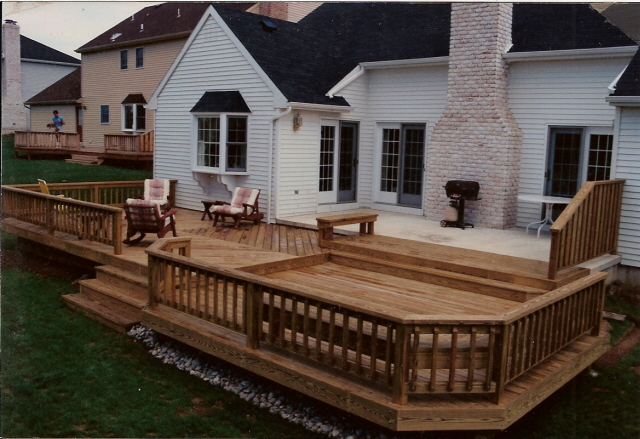Pressure treated wood makes a great building product for a variety of home renovation projects. It can be used safely for all types of exterior projects around the house. Pressure treated wood is affordable, easy-to-maintain and provides a number of benefits for home projects.
What is Pressure Treated Wood?
Although pressure treated wood has been around for about 70 years, many people know little about it. Typically, a softwood lumber like pine, pressure treated wood has been chemically treated to resist fungal decay, wood rot and termite damage. Wooden boards are placed into large pressurized tanks where chemical preservatives are pumped deep into the wood’s fibers. This process creates a strong, durable wood product that’s ideal for exterior home renovation projects. It’s great for outdoor projects like building fences and decks, outdoor sheds, picnic tables, planters and children’s play equipment and swing sets.
The type and amount of chemical preservatives used on the wood directly affects the level resistance to rot and decay. If pressure treated lumber is stamped “Above Ground Use,” it should not touch the ground. It can be used safely for deck railings, fence caps, retaining walls caps, and other projects where the wood doesn’t touch the ground. If lumber is stamped “Ground Contact,” it can safely be placed directly on or in the ground without harm from rot or decay. To ensure that you’re choosing the right lumber for your project, check the board’s stamp or label. It shows a number that represents the minimum amount of preservative in the wood. The higher the number, the more rot-resistant the wood.
Are There Any Safety Concerns?
Since the 1940s, the main chemical used on pressure treated wood was chromate copper arsenate (CCA). Due to health and safety concerns, most industries stopped using this chemical for residential lumber in 2003. However, CCA is so effective as a preservative, it’s still used today for industrial and commercial projects. It’s commonly used on telephone poles by wood utility poles suppliers, commercial loading docks, shipping docks, pedestrian boardwalks, and various large-scale commercial projects.
Today, pressure treated lumber is chemically treated with a variety of inorganic chemicals rather than chromate copper arsenate. Although new chemicals are less toxic, levels of copper are much higher. Copper is highly corrosive, especially to aluminum, so manufacturers recommend galvanized or stainless-steel building parts when building projects with pressure treated wood.

